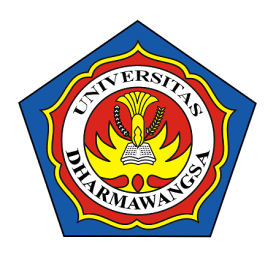A Metode K-Means Clustering Dalam Pengelompokan Penjualan Produk Frozen Food
DOI:
https://doi.org/10.70340/jirsi.v3i1.88Abstrak
Abstrak
Terciptanya banyak bisnis di bidang penjualan berbasis online atau yang dikenal dengan istilah e-commerce menjadi bukti bahwa teknologi internet saat ini berkembang begitu pesat di berbagai industri, termasuk bisnis. Toko online merupakan salah satu kegiatan bisnis yang menggunakan E-Commerce dalam kegiatan pemasaran atau perdagangannya. Mengetahui seberapa besar minat konsumen untuk membeli suatu produk dapat dilakukan dengan menghitung jumlah transaksi penjualan yang dilakukan, yang merupakan salah satu informasi yang dapat dikumpulkan. Sehingga peningkatan jumlah aktivitas transaksi yang dilakukan konsumen ada yang sangat besar dan tidak terdata. Hasil dari penelitian ini menunjukkan bahwa jumlah cluster yang paling optimal adalah dua cluster. Dari 45 data produk makanan beku, terdapat 3 produk makanan beku yang masuk ke dalam cluster 1 dan 42 produk makanan beku yang masuk ke dalam cluster 2. Penelitian ini bertujuan untuk menerapkan metode k- means clustering dalam pengelompokan penjualan frozen food untuk mengetahui pengelompokan minat konsumen terhadap suatu produk. makanan beku. Diharapkan penelitian ini dapat bermanfaat bagi perusahaan dan sebagai referensi untuk penelitian selanjutnya.
Kata Kunci : K-Means Clustering, Toko Online, Makanan Beku
Unduhan
Referensi
Herlinda, V., Darwis, D., & Dartono. (2021). Analisis Clustering Untuk Recredesialing Fasilitas Kesehatan Menggunakan Metode Fuzzy C-Means. Jurnal Teknologi Dan Sistem Informasi (JTSI), 2(2), 94-99.
Kamila, I., Khairunnisa, U., & Mustakim. (2019). Perbandingan Algoritma K-Means dan K-Medoids untuk Pengelompokan Data Transaksi Bongkar Muat di Provinsi Riau. Jurnal Ilmiah Rekayasa dan Manajemen Sistem Informasi, 5(1), 119 - 125.
Larose, D. T. 2005. Discovering Knowledge In Data: An Introduction To Data Mining. JhonWilley & Sons, Inc.Kusrini & Luthfi, E. T. 2009. Algoritma Data Mining. Yogyakarta: Andi
Luthfi, M. A., & Nilogiri, A. (2019). Implementasi Algoritma K-Means Clustering Untuk Pengelompokan Minat Konsumen Pada Produk Online Shop. Universitas Muhammadiyah Jember, 1-5.
Mulyati, S. (2015). Penerapan Data Mining dengan Metode Clustering untuk Pengelompokan Data Pengiriman Burung. Seminar Ilmiah Nasional Teknologi Komputer. 30-35.
Nasari, F., & Darma, S. (2015). Penerapan K-Means Clustering pada Data Penerimaan Mahasiswa Baru (Studi Kasus: Universitas Potensi Utama). Seminar Teknologi Informasi dan Multi Media 2015 (pp. 73-78). Yogyakarta: STMIK AMIKOM.
Nasution, S. A., Poningsih, & Okprana, H. (2021). Penerapan Algoritma K-Means Pada Penjualan Frozen Food Pada UD Soise Sosis Pematangsiantar. Jurnal Sistem Komputer dan Informatika (JSON), 2(2), 171-177.
Piatetsky, G. & Shapiro. 2006. An Introduction Machine Learning, data mining, and Knowledge discovery, Course in data mining Kdnuggets.
Rohmawati, N., Defiyanti, S., & Jajuli, M. (2015). Implementasi Algoritma K-MEANS dalam Pengklasteran Mahasiswa Pelamar Beasiswa. Jurnal Ilmiah Teknologi Informasi Terapan, 1(2), 62-67.
Silahi, M. (2018). Analisis Clustering Menggunakan Algoritma K-Means Terhadap Penjualan Produk Padapt Batamas Niaga Jaya. Computer Based Information System Journal, 6(2), 20-34.
Unduhan
Diterbitkan
Terbitan
Bagian
Lisensi
Hak Cipta (c) 2024 Lutfhia Azzahra, Amru Yasir

Artikel ini berlisensiCreative Commons Attribution-ShareAlike 4.0 International License.








